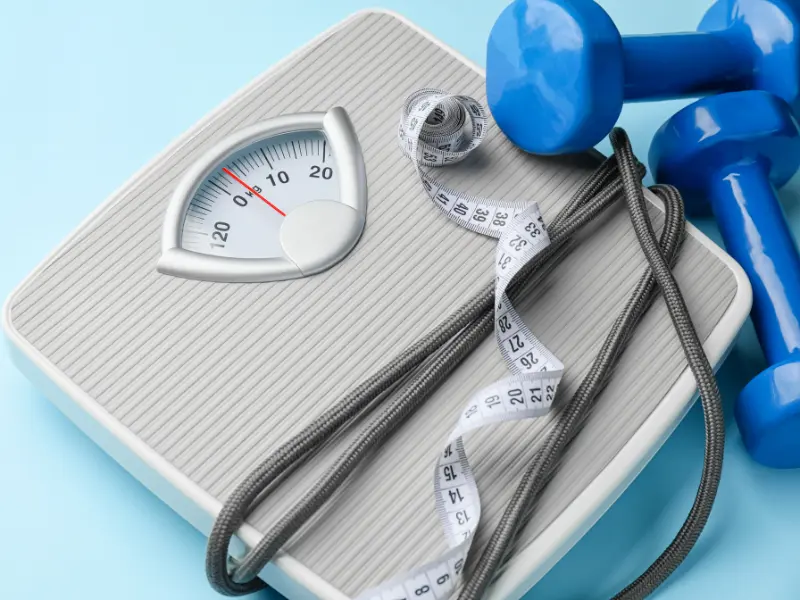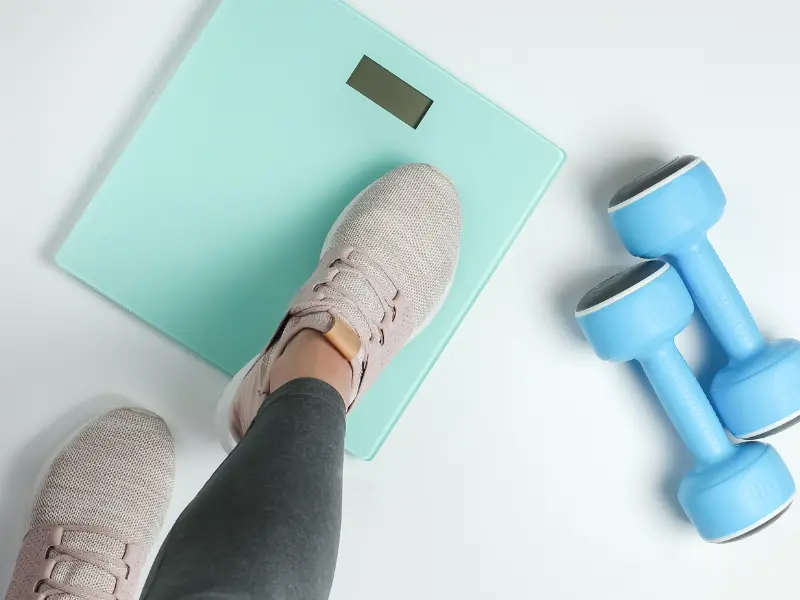Measuring the body is an essential aspect of understanding your health and fitness. Whether you are trying to lose weight, build muscle, or maintain a healthy lifestyle, tracking your body measurements can provide valuable insights into your progress and help you stay motivated.
This article will explore the importance of measuring your body and provide tips for accurately tracking your measurements.
Understanding Body Composition
When measuring your body, understanding your body composition is essential. Body composition refers to the different components of your body, including how much fat, muscle, bone, and water you have.
Components of Body Composition
Body composition has two primary components: fat mass and fat-free mass.
Fat mass is the amount of fat in your body, while fat-free mass includes everything else, such as muscle, bone, and organs.
Several methods are available to measure body composition, including bioelectrical impedance, skinfold thickness measurements, and dual-energy X-ray absorptiometry (DEXA).
Each method has advantages and disadvantages; the most appropriate method depends on your goals and budget.
Importance of Body Fat Percentage
Body fat percentage is an essential aspect of body composition.
It refers to the percentage of your body weight made up of fat.
A healthy body fat percentage is necessary for overall health. It can help reduce the risk of chronic diseases such as heart disease and diabetes.
The ideal body fat percentage varies depending on age, gender, and activity level.
For men, a healthy body fat percentage ranges from 10-20%, while for women, it ranges from 18-28%.
Maintaining a healthy body fat percentage can be achieved through regular exercise and a healthy diet.
Incorporating strength training into your exercise routine can help increase lean muscle tissue, which can help improve your body composition and overall health.
Measuring the Body

When it comes to taking accurate body measurements, there are a few basics you should know.
Choosing the right tools and measuring at the standard points ensures your measurements are as precise as possible.
Choosing the Right Tools
The most essential tool for taking accurate measurements is a tape measure. You can find them at most hardware stores or online.
Ensure the measuring tape is snug but tight enough when taking measurements. You want it to be close to the skin but not compressing any of the flesh. This will guarantee precise and uniform measurements.
Standard Measurement Points
You must measure at the right points on your body to take accurate measurements. Here are some standard measurement points:
- Chest: Measure around the fullest part of your chest, just under your armpits.
- Waist: Measure around your natural waistline, just above your belly button.
- Hips: Measure around the widest part of your hips and buttocks.
By measuring at these standard points, you can ensure that your measurements are consistent and accurate.
Taking accurate body measurements can be tricky, but with the right tools and techniques, you can ensure that your measurements are as precise as possible.
Tracking Weight and Fat Loss

Understanding Weight Loss
Losing weight is a common goal for many people. However, it is crucial to understand that weight loss is not always the same as losing fat. Losing weight can be due to various factors such as water weight, muscle loss, or fat loss.
To track your weight loss progress, you can use a scale. For optimal consistency, weigh yourself at the same time daily, ideally in the morning post-bathroom and before consuming any food or beverages.
Remember that weight fluctuates daily, so focusing on the overall trend rather than individual measurements is essential.
Monitoring Fat Loss
If you want to lose fat specifically, tracking your body fat percentage may be more beneficial than just your weight. This can be done using various methods such as skinfold calipers, bioelectrical impedance analysis, or DEXA scans.
When monitoring fat loss, it is essential to understand that losing too much fat too quickly can harm your health. A healthy rate of fat loss is typically 1-2 pounds per week.
You need to create a calorie deficit through diet and exercise to achieve this.
In addition to tracking your weight and body fat percentage, taking progress photos and measuring various body parts such as the waist, hips, and thighs can also be helpful.
This can provide a more comprehensive view of your progress and help you stay motivated on your weight loss journey.
Remember, losing weight or fat is not a quick fix and requires consistent effort and patience. Celebrate your progress and focus on making sustainable lifestyle changes rather than just achieving a certain number on the scale.
Advanced Techniques for Body Measurement

Using Body Fat Scales
Body fat scales are a popular tool for measuring body composition. They pass a small electrical current through your body and measure the resistance. This measurement is then used to estimate your body fat percentage.
When using a body fat scale, following the instructions is essential. Make sure you’re barefoot and standing on a flat, hard surface.
Avoid eating, drinking, or exercising for at least two hours before the test. Try to take the test at the same time of day, as your body’s hydration levels can affect the results.
Remember that body fat scales are not 100% accurate and can be affected by factors such as hydration levels, age, and gender.
However, they can still be a helpful tool for tracking changes in body composition over time.
Interpreting Measurements for Fitness Goals
When measuring your body, it’s essential to have specific fitness goals in mind.
For example, if your goal is to lose weight, you’ll want to focus on reducing your body fat percentage. If your goal is to gain muscle, you’ll want to focus on increasing your muscle mass.
To track your progress towards these goals, you can use a spreadsheet or fitness app to record your measurements and track your progress over time.
Everyone’s body is different, and progress may not always be linear. Don’t get discouraged if you don’t see immediate results – focus on making healthy choices and being consistent with your fitness routine.
Maintaining Proportions and Symmetry

Assessing Body Shape
When measuring your body, assessing your body shape is an essential first step. Knowing your body shape can help you identify areas needing more attention when maintaining proportions and symmetry.
Several body shape categories include hourglass, apple, pear, and rectangle.
To determine your body shape, you can measure your bust, waist, and hips and then compare the measurements.
- If your bust and hips are relatively the same size, and your waist is smaller, you may have an hourglass shape.
- You may have an apple shape if your waist is more prominent than your bust and hips.
- You may have a pear shape if your hips are more prominent than your bust and waist.
- You may have a rectangle shape if your bust, waist, and hips are the same size.
Strategies for Balanced Development
Once you have identified your body shape, you can use strategies to maintain proportions and symmetry.
For example, if you have an apple shape, you should focus on gaining muscle in your lower body to balance out your upper body.
If you have a pear shape, you should focus on building muscle in your upper body to balance your lower body.
In addition to focusing on specific areas, it is also essential to maintain a healthy body weight.
Being overweight or underweight can throw off your body’s proportions and symmetry.
Aim to maintain a healthy weight through a balanced diet and regular exercise.
Key Takeaways
- Take body measurements at standard points for consistency and accuracy.
- Use various methods to track weight and fat loss, including scales, body fat percentage measurements, progress photos, and body part measurements.
- Be patient and consistent with your weight loss or fitness goals.
- Use tools such as body fat scales to track changes in body composition over time.
- Understand your body shape to help maintain balanced proportions and symmetry.
- Focus on healthy weight maintenance through proper nutrition and exercise.
Conclusion
Measuring your body is essential in tracking your progress towards a healthier you.
You can better understand your body’s composition and make informed decisions to achieve your fitness goals using various methods and techniques.
Remember to focus on overall trends rather than individual measurements, celebrate progress, and prioritize sustainable changes for long-term success. .

